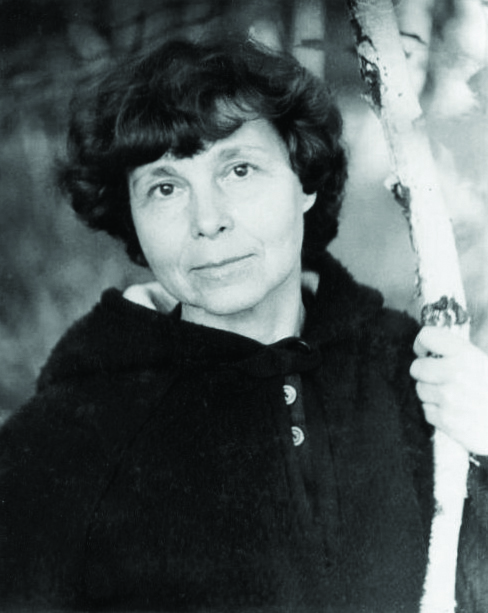CHACONNE FOR PIANO
Sofia Gubaidulina
(b. Chistopol’, Tatar Republic, Soviet Union, October 24, 1931)
Composed 1962; 10 minutes
 “I am a religious Russian Orthodox person and I understand ‘religion’ in the literal meaning of the word, as ‘re-ligio’, that is to say the restoration of connections, the restoration of the ‘legato’ of life. There is no more serious task for music than this.” – Sofia Gubaidulina
“I am a religious Russian Orthodox person and I understand ‘religion’ in the literal meaning of the word, as ‘re-ligio’, that is to say the restoration of connections, the restoration of the ‘legato’ of life. There is no more serious task for music than this.” – Sofia Gubaidulina
Born in the Tatar Autonomous Soviet Socialist Republic, Gubaidulina entered the Moscow Conservatory in 1954, one year after Stalin’s death, thereby dodging the more extreme of the hardships inflicted on her graduation examiner, Dmitri Shostakovich. “My wish for you is that you should continue on your own, incorrect way,” Shostakovich quietly told the determinedly independent composer, both well aware of the irony behind the comment. Gubaidulina’s twin passions for the Western musical avant-garde and religious symbolism won her few friends in the Soviet Union under Khrushchev, Brezhnev and the bleak years of the early 1980s. With Gorbachev’s reforms, however, Gubaidulina was eventually allowed to travel to the West, where Gidon Kremer’s advocacy of the violin concerto Offertorium that she wrote for him paved the way for her recognition as Russia’s best-known woman composer. In a flood of music since leaving her home country, she has written for most of the world’s great orchestras. Now 91, she has resided in a village outside Hamburg, Germany for the past three decades. Her greatest wish, her publisher says, remains that she should continue to write music, quietly and at home.
Although viewed by the composer as a student work, the Chaconne of 1962 has become one of Gubaidulina’s most played compositions. She regularly works closely with musicians performing her new works. When completing studies at the Moscow Conservatory, she was commissioned by Marina Mdivani, a Tchaikovsky Competition prizewinner, and a pianist Gubaidulina describes as possessing “a powerful chord-playing technique as well as a lively temperament.” The crashing opening chords of the Chaconne’s imposing eight-bar theme are marked Andante maestoso and firmly rooted in the key of B minor. With them, Gubaidulina builds a taut musical structure over seven continuous repetitions of increasing length to a coda. “In comparison with a conventional chaconne, this one is particularly virtuosic and rich in contrasts, she says. “It essentially consists of chord variations which, towards the end, reveal a strong dynamic tendency.”